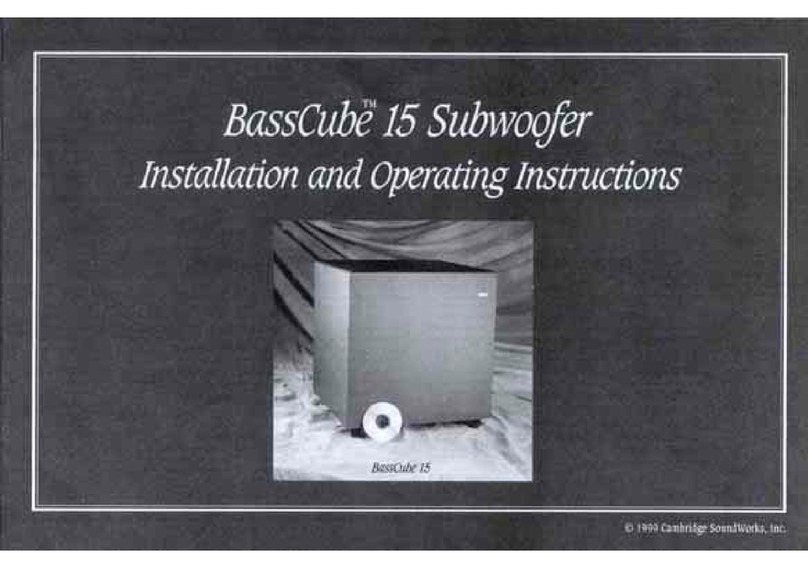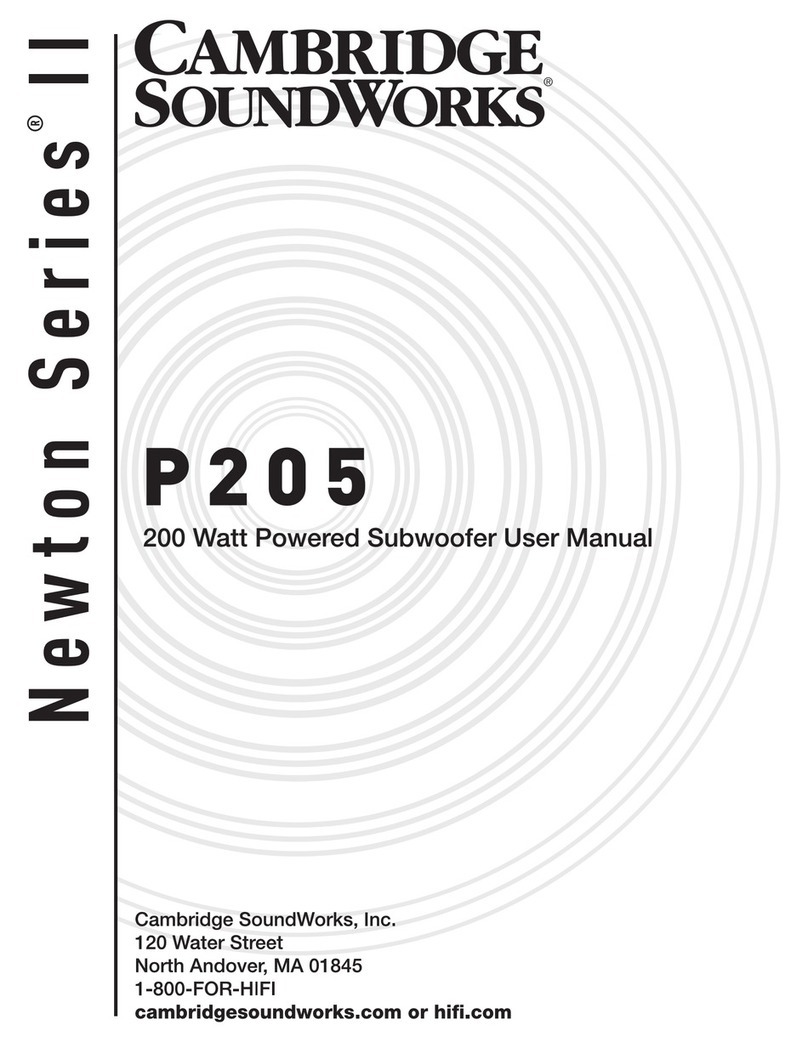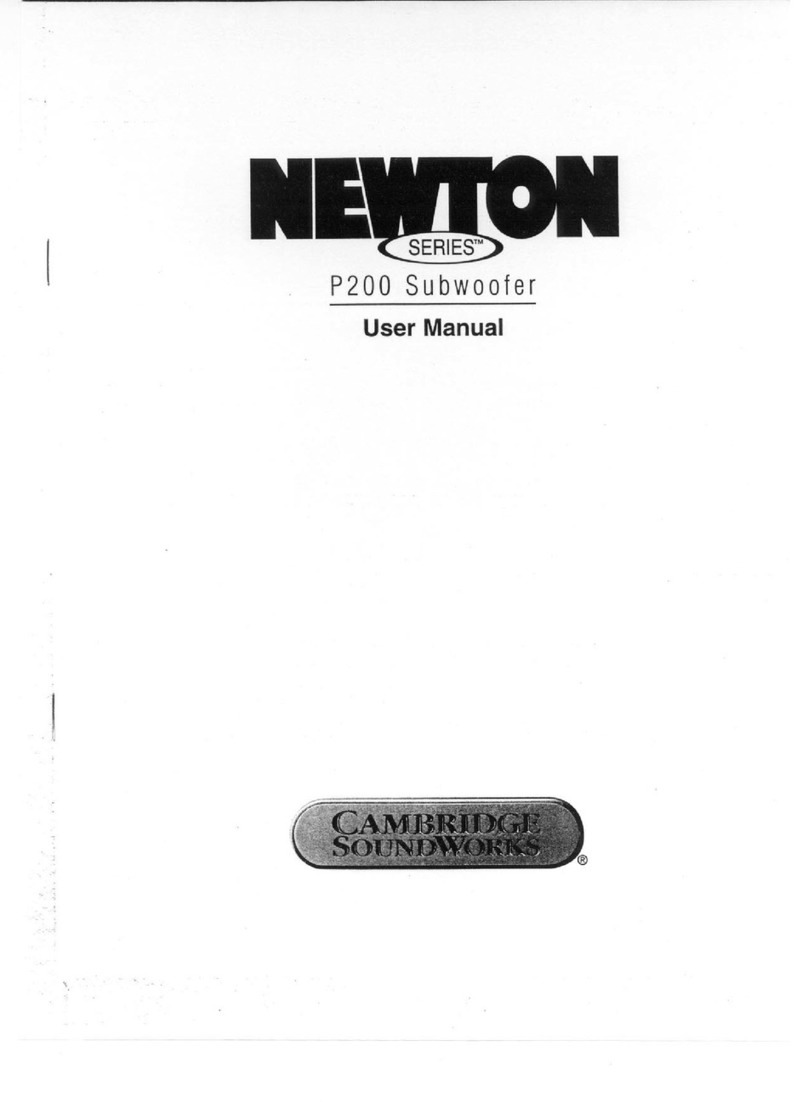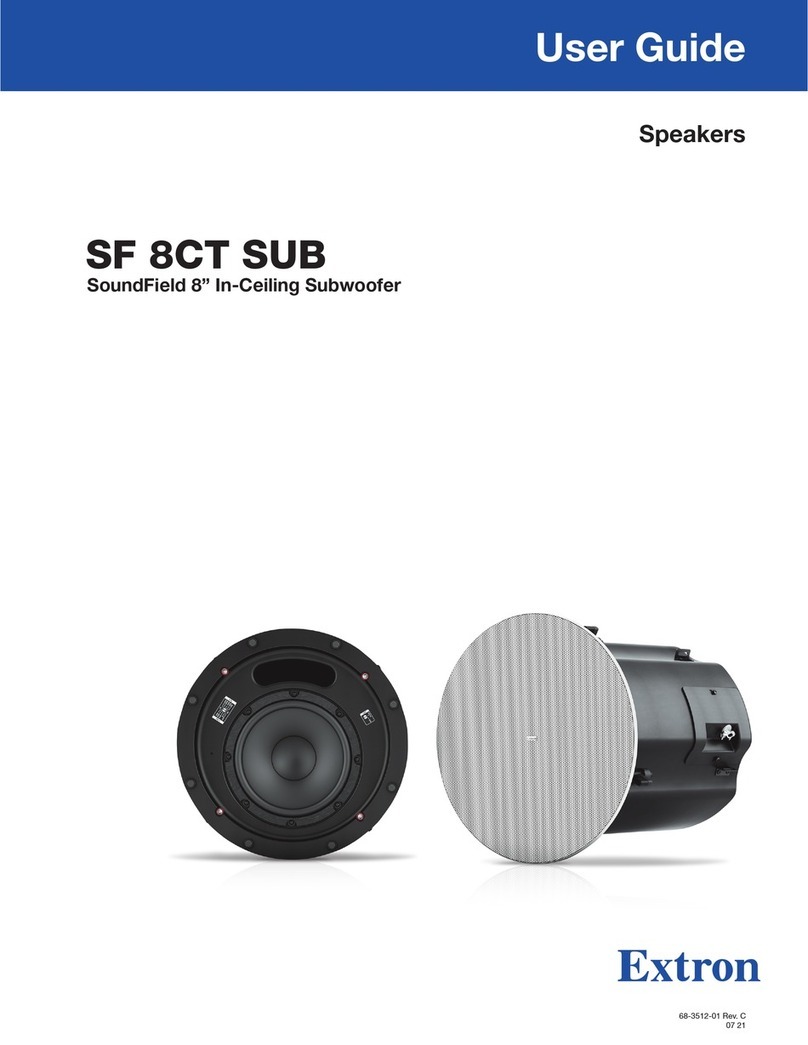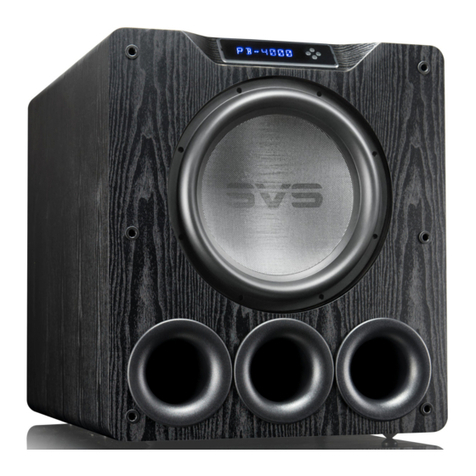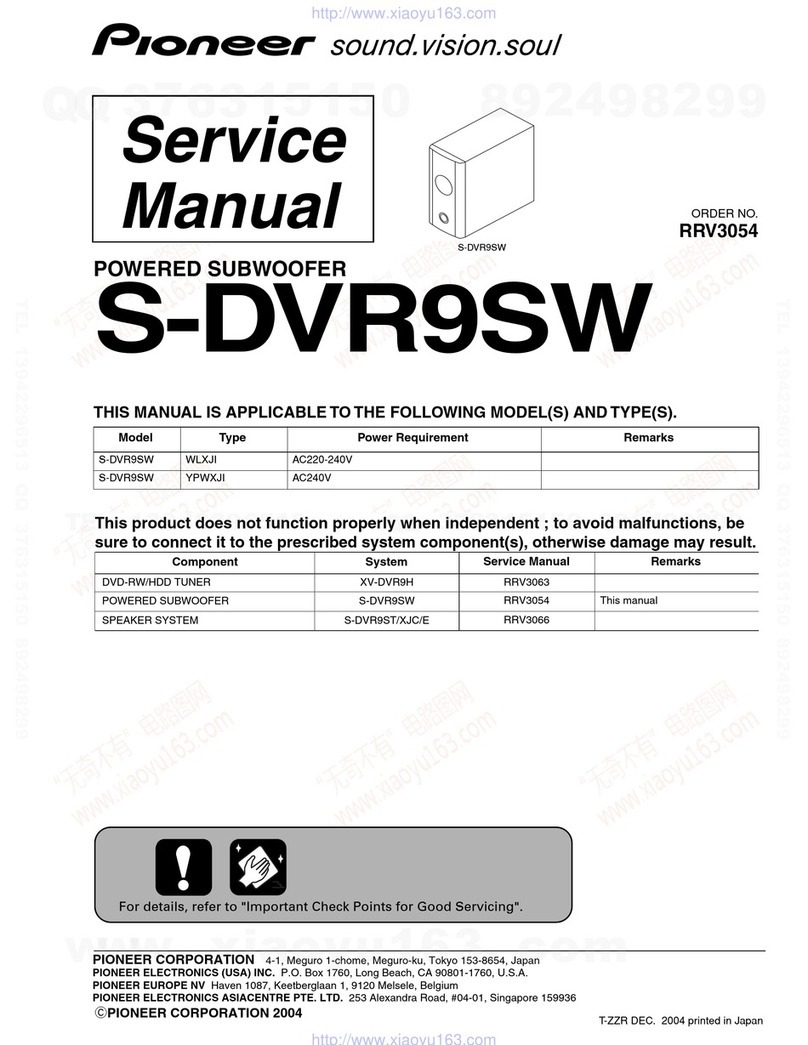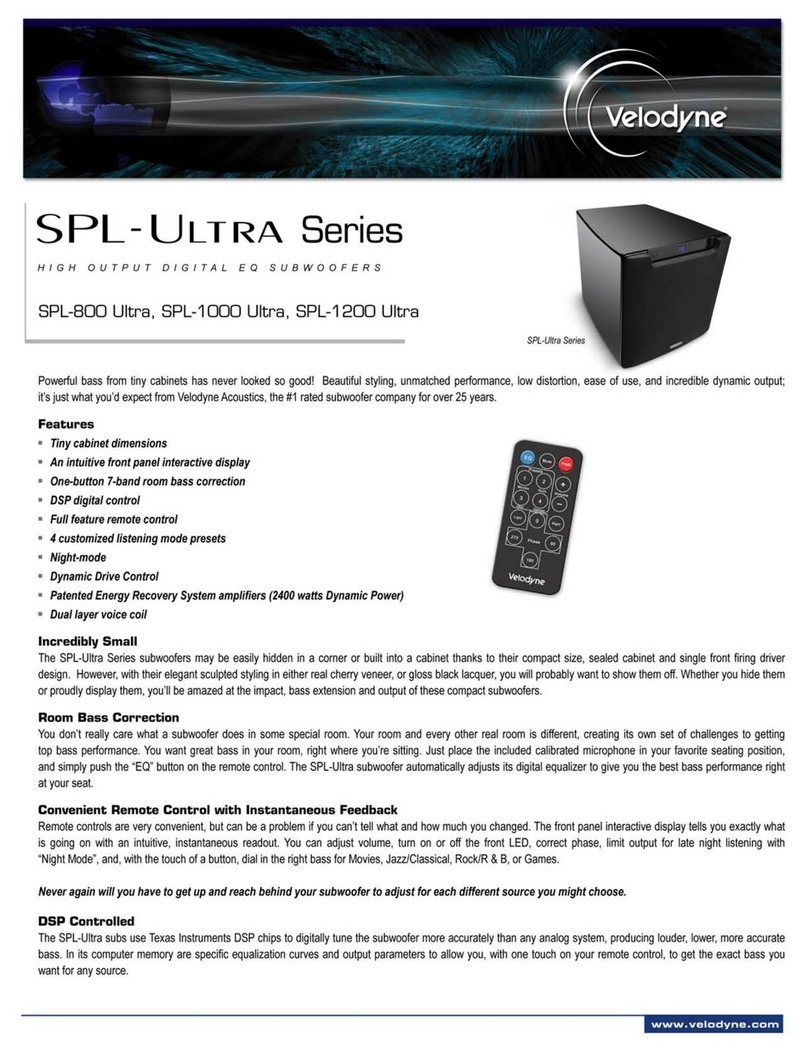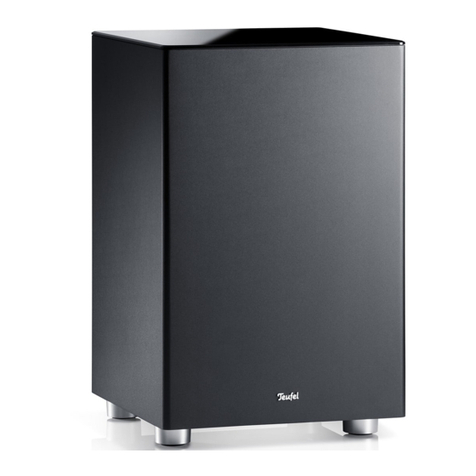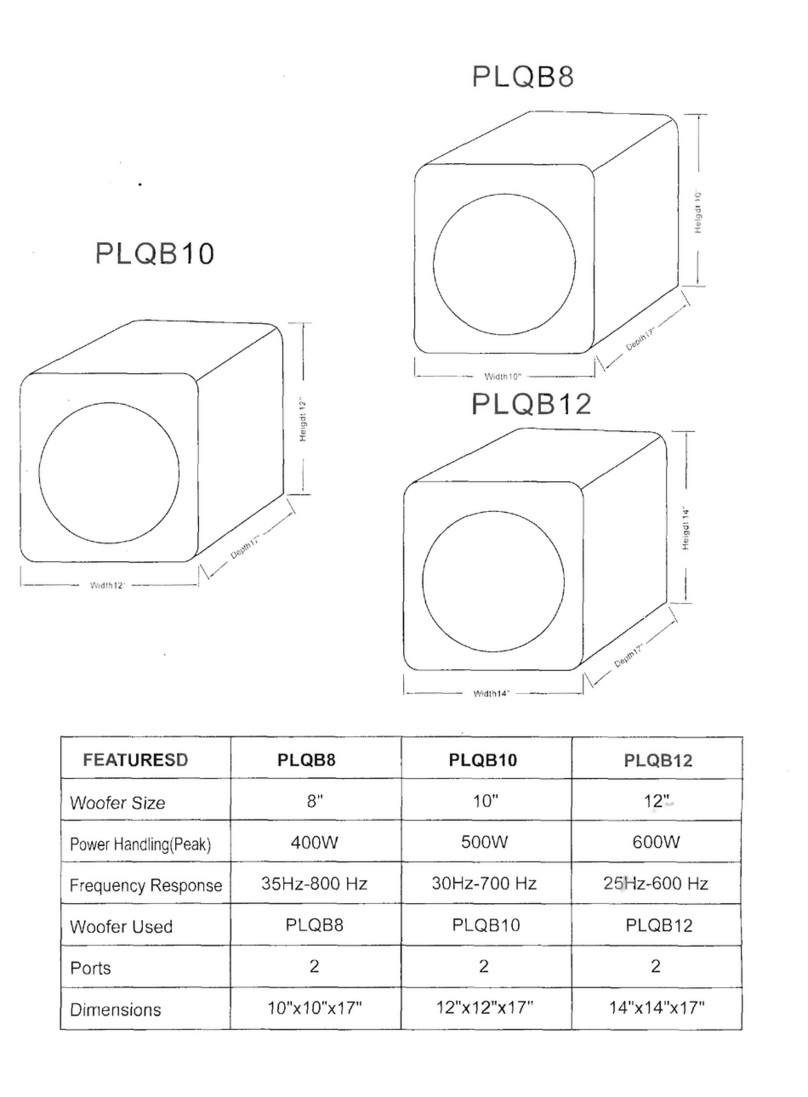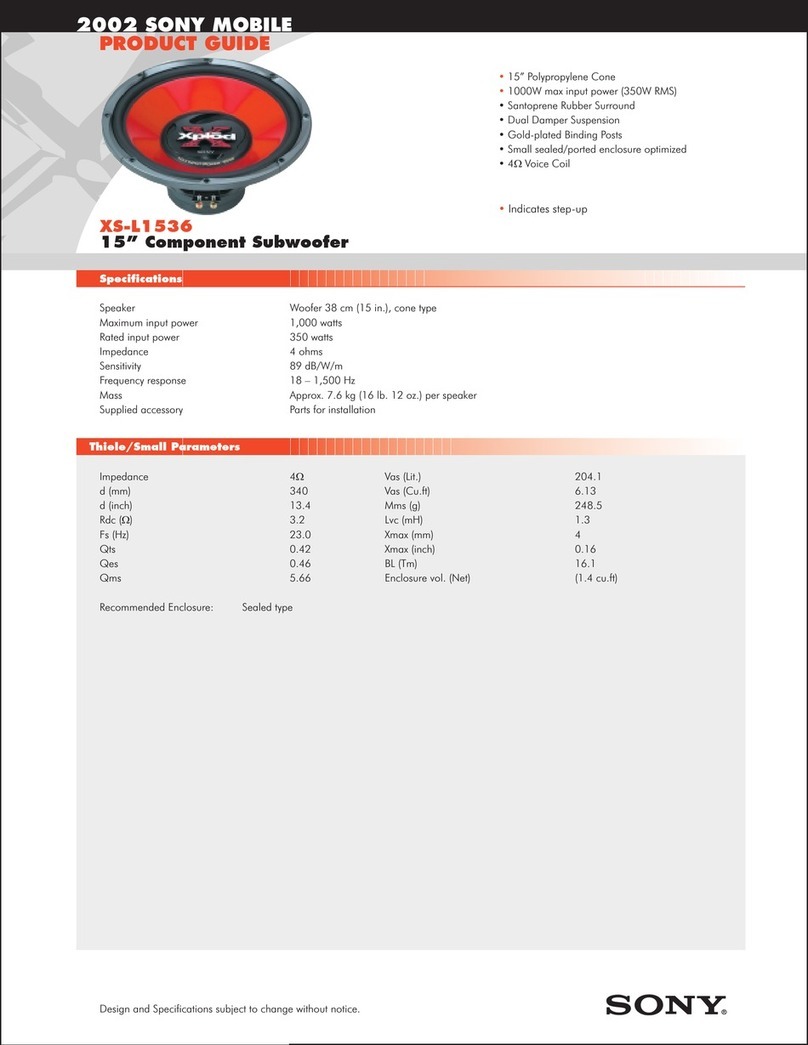33
POWER-CORD PROTECTION – The AC power cords
should be routed so that they are not likely to be
walked on. No object should bring weight to bear on
to the AC power cords.
LIGHTNING – For added protection for the speaker
during a lightning storm, or when it is left unattended
and unused for long periods of time, unplug them from
the wall outlet. This will prevent damage to the speaker
due to lightning and power-line surges.
OVERLOADING – Do not overload wall outlets, exten-
sion cords, or integral convenience receptacles as this
can result in a risk of fire or electric shock.
OBJECT AND LIQUID ENTRY – Never use probes of
any kind to reach into the speaker as they may touch
dangerous voltage points or short parts that could
result in a fire or electric shock. Never spill liquid of
any kind on the speaker.
SERVICING – Do not attempt to service the speaker
yourself as opening or removing covers may expose
you to dangerous voltage or other hazards. Refer all
servicing to qualified service personnel.
DAMAGE REQUIRING SERVICE – Unplug the speak-
er from the wall outlet or other power source and refer
servicing to qualified service personnel under the fol-
lowing conditions:
a) When the power-cord or plug is damaged.
b) If liquid has been spilled, or objects have fallen into
the speaker.
c) If the speaker has been exposed to rain or water.
d) If the speaker does not operate normally by follow-
ing the operating instructions; or exhibits a distinct
change in performance.
e) If the speaker has been dropped or damaged in
any way.
REPLACEMENT PARTS – When replacement parts
are required, be sure the service technician uses
replacement parts specified by Cambridge
SoundWorks or have the same characteristics as the
original part. Substandard substitutions may result in
fire, electric shock, or other hazards.
SAFETY CHECK - Upon completion of any service or
repairs to the speaker, ask the service technician to
perform safety checks to determine that the speaker is
in proper operating condition.
READ INSTRUCTIONS – All safety and operating
instructions should be read before the speaker is
operated.
RETAIN INSTRUCTIONS – The safety and operating
instructions should be retained for future reference.
HEED WARNINGS – All warnings on the speaker and
in the operating instructions should be adhered to.
FOLLOW INSTRUCTIONS – All operating and use
instructions should be followed.
CLEANING – Unplug the speaker from the wall outlet
or other power source before cleaning. Use a damp
cloth for cleaning.
ATTACHMENTS – Do not use any adapters or attach-
ments not recommended by Cambridge SoundWorks
as they may cause hazards.
WATER AND MOISTURE – Do not use the speaker
near water-for example, near a bath tub, wash bowl,
kitchen sink, or laundry tub; in a wet basement; or near
a swimming pool or other similar areas.
ACCESSORIES – Do not place the speaker on an
unstable cart, stand, tripod, bracket, or table. The
speaker may fall, causing serious injury to a child or
adult and serious damage to the product.
VENTILATION – Slots, openings and metal fins in the
cabinet are provided for ventilation, to ensure reliable
operation of the speaker and to prevent it from over-
heating. These areas must not be blocked or covered
such as by placing the product on a bed, sofa, very
deep pile rug, or other similar surface. The speaker
should not be placed in a built-in installation such as a
bookcase or rack.
HEAT – The speaker should be situated away from heat
sources such as radiators, heat registers, stoves, and
other products (including amplifiers) that produce heat.
POWER SOURCES – The speaker should be operated
only from the type of power source indicated on the
label. If you are not sure of the type of power supply to
your home, consult your dealer or local power company.
POLARIZATION – The speaker is equipped with a
polarized alternating-current line plug (a plug having
one blade wider than the other). This plug will fit into
the power outlet only one way. This is a safety feature.
If you are unable to insert the plug fully into the outlet,
try reversing the plug. If the plug should still fail to fit,
contact your electrician to replace your obsolete outlet.
Do not defeat the safety purpose of the polarized plug.
IMPORTANT SAFETY INSTRUCTIONS
